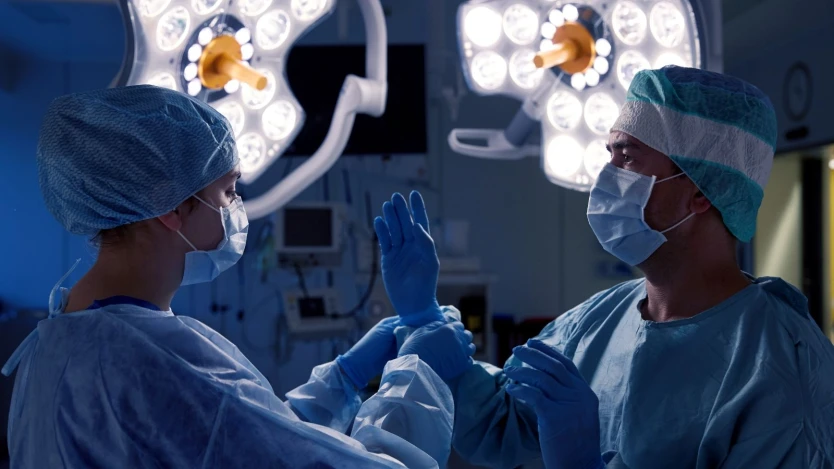Prostate Biopsy Process, Results, and Recovery Explained
In the USA, Prostate cancer is a common type of cancer in men. Earlier detection of this cancer can significantly increase the chances of successful treatment. Prostate biopsy is a major part of detecting prostate cancer and involves the collection of small tissue samples from the prostate gland to examine the cancer cells. If you want to know more about prostate biopsy, then in this blog, we are going to discuss the Prostate Biopsy Process, Results, and Recovery Explained.
It is a diagnostic procedure for detecting prostate cancer that mainly detects cancer cells in the prostate gland. This procedure is mainly advisable if the prior tests, like the PSA test and DRE exam, display abnormal outcomes. In this procedure, small tissues are removed by using a hollow needle. Then they were reviewed by a pathologist to detect any cancer cells. Although the biopsy is an ideal method to confirm the existence of prostate cancer, it is crucial to know that a boosted PSA or uneven findings during DRE don’t directly indicate the cancer.

The prostate biopsy is typically suggested by a healthcare professional in the following conditions:
There are mainly two types of prostate biopsy procedures used, and the exact approach relies on different aspects such as your condition and the recommendations of your healthcare provider.
Transrectal Ultrasound-Guided Biopsy
Transrectal Ultrasound-Guided Biopsy is the most commonly used procedure for prostate biopsies in the USA. In this procedure, a small ultrasound probe is inserted into the rectum to visualize the prostate, delivering real-time images of the organ. Then a spring-loaded needle is utilized to gather small tissue samples from different areas. The procedure is mainly performed under general anesthesia to minimize pain.
Transperineal Biopsy
In Transperineal Biopsy, the biopsy needle is inserted through the area between the scrotum and anus instead of rectum. This procedure is probably utilized when biopsies of some specific parts of the prostate are not efficiently reached in the rectum. It can be performed under local or general anesthesia.
Also, some hospitals now use MRI-guided biopsies or MRI/ultrasound fusion biopsies to enhance the accuracy of targeting irregular areas within the prostate. These cutting-edge procedures blend MRI images with ultrasound guidance, offering improved precision in sampling.
Complete preparation for the prostate biopsy is necessary to ensure the procedure goes correctly and to reduce the chances of difficulties. Your doctor will provide you with clear instructions on how to prepare. Here are some key steps to follow:
A prostate biopsy generally takes 10 to 20 minutes and is performed in a urologist’s clinic, an outpatient center, or a hospital. Here we mentioned the step-by-step breakdown of the procedure:
This procedure is not painful because of anesthesia, but some patients feel little discomfort or a slight pain at the time of needle insertion.
After the accomplishment of a biopsy, most patients can go home on the same day. There are also some possible side effects involved in this procedure. Here we mentioned some possible post-procedure symptoms:
These are the common side effects, but you should immediately contact your doctor if you experience these signs:
After the biopsy, your doctor will discuss with you the results of the procedure. The pathology report will have:
Presence of Cancer: The report will show if the cancer cells were found in the tissue sample.
Gleason Score: The Gleason score, which ranges from 6 to 10, shows the aggressiveness of cancer. A higher score indicates a more aggressive cancer.
Grade Group: The Grade Group conforms to the Gleason score and shows the level of hostility.
Extent of Cancer: Also, the report will describe the extent of prostate tissue affected by cancer.
If the cancer is detected in reports, then your doctor will use the TNM staging system to decide the stage of cancer:
After the biopsy, most patients can return to normal activities in 2 to 4 hours. To help with recovery, keep these important aspects in your mind:
In conclusion, a prostate biopsy is necessary for diagnosing prostate cancer when earlier tests result in concerns. Understanding the procedure and recovery can help patients relieve stress. If you follow the proper post-biopsy care & instruction, then it will support you in recovery. You should always consult your doctor for personalized guidance and to discuss your results.
Answer: You should prepare for some key aspects, such as stopping specific medications, taking prescribed antibiotics, using a cleansing enema, and arranging for conveyance when you will receive general anesthesia in tests.
Answer: The Gleason score ranges from 6 to 10 and evaluates the aggressiveness of the prostate cancer. More elevated scores indicate a more aggressive state of cancer in the prostate gland.
Answer: You should rest properly, avoid heavy fitness activity, stay hydrated, take prescribed antibiotics, avoid alcohol & caffeine, and take over-the-counter pain relief if required.
Answer: You should consider multiple changes, such as maintaining a healthy lifestyle, including a balanced nutrition and regular exercise, which may improve overall prostate health.
Error: Contact form not found.